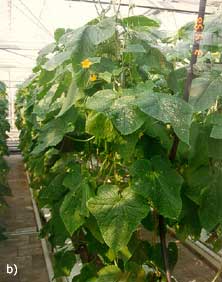| Host
range |
| Much of the published data on host plants of thrips is confusing.
Thrips fly and disperse actively in warm weather, and even wingless adults
of some species are readily distributed by winds. Many authors fail to
distinguish between those plants on which they have found one or more
adult thrips and those plants on which adults of a species will lay eggs
and breed successfully. Conversely, it is not uncommon for economic entomologists
to focus their attention on a particular species of thrips on a crop
whilst ignoring that unknown part of the meta-population that exists
on non-crop plants in the vicinity. Further complications in discussing
the host plants of thrips arise from increasing evidence that, at least
in some species, the host plant of a thrips varies between sites (eg. Neohydatothrips gracilicornis from north
and south Europe, or Aeolothrips
ericae from England and Germany). Moreover, a viruliferous
adult presumably has the potential to transmit a tospovirus to a plant
on which it cannot breed successfully. |
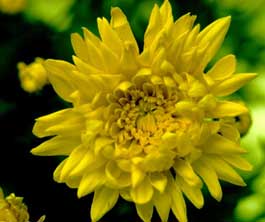 |
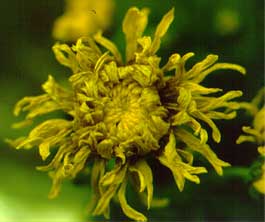 |
Frankliniella occidentalis: Chrysanthemum blossom before and after
heavy attack of western flower thrips (photos: G. Moritz). |
| The true host associations of particular thrips
species are thus sometimes difficult to determine, although this precise
information is important, both in population studies of pest species
as well as in more general studies on the evolutionary radiation and
host exploitation of these insects. |
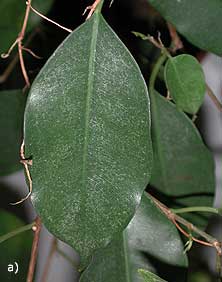 |
|
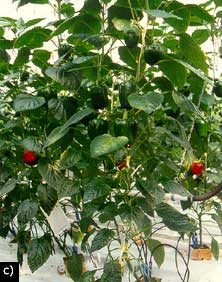 |
Parthenothrips dracaenae: a) heavy infestation on Ficus leaves; Thrips
tabaci and Frankliniella occidentalis: heavy infestation under
warmhouse conditions on b) Cucumber and
c) Pepper. For
more information see T. Lewis
(1997) (photos: G. Moritz).
|
| The majority of important thrips pests
are polyphagous. Thrips tabaci and Frankliniella occidentalis can
both breed on a wide range of plant species, and moreover both of these
will also feed on mite eggs and can thus at times be considered as “beneficials”.
These thrips are usually associated with the flowers and young foliage
of their host plants, and Scirtothrips species are particularly
damaging to such young tissues. In contrast, polyphagous Panchaetothripine
species such as Heliothrips haemorroidalis and Hercinothrips bicinctus feed
primarily on older leaves, and such leaves usually bear black faecal
droplets deposited by the thrips. The larvae of many pest thrips species
hide under the hairs on leaves, close to the major leaf veins. Because
of this, larvae are frequently not observed, and they can be particularly
difficult to collect when attempting to estimate the size of populations. |
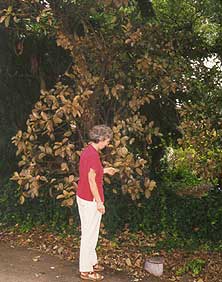
|
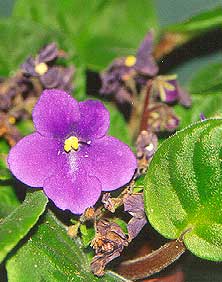 |
Hercinothrips bicinctus: Defoliation of a Ficus tree in Canberra (photo: G. Moritz).
Frankliniella occidentalis: Saintpaulia plants
- feeding damage by Western Flower Thrips on blooms (photo: G. Moritz). |
| The cryptic habits of larvae, hiding
beneath leaf hairs, results in difficulties in targeting them with many
insecticides, and this together with the protection of eggs within plant
tissues increases the problems of quarantine both within and between
countries. For example, many cultivators of chrysanthemums pluck the
apical two inches from their oldest crop to treat with rooting hormone
and thus establish a new crop, but fail to realise that these apical
buds and leaves carry thrips eggs and larvae. |



